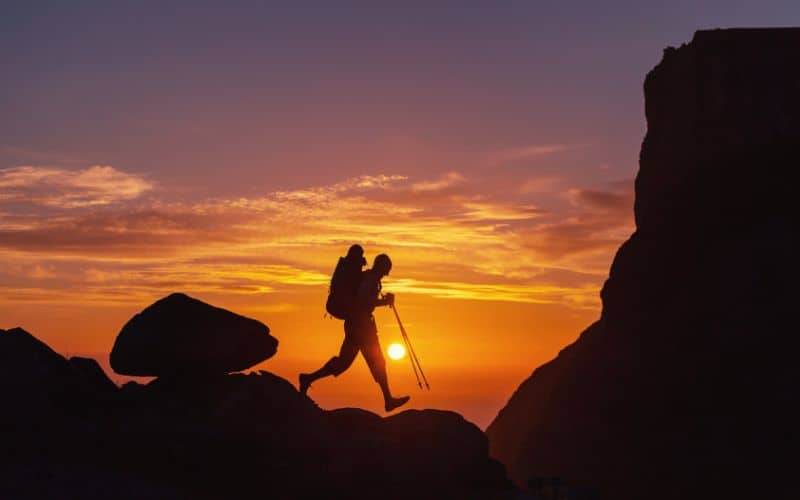Let’s face it, hiking is an energy-intensive pursuit!
Charging uphill and maintaining your composure on steep downhill sections can be difficult if you’re not in tip-top form.
Staying in shape for trekking in the mountains requires a solid training plan that’s tailored for outdoor pursuits. We know how challenging it can be to find a quality training routine for hiking, so we’ve put together a guide to help you out.
In this article, we’re going to discuss everything you need to know about preparing your body for hiking. We’ll clue you into why you should start an exercise routine for your trekking career. We’ll also discuss how you can create your own program that targets the muscles and cardiovascular capacity you need to excel in the mountains.
Let’s get started.
Table of Contents
Benefits of Hike Specific Training
There are many amazing benefits to training for trekking. Here are some of the key advantages that an exercise program can offer for your time out in the mountains.
Hike Faster and Further
Put simply, a regular exercise program can help you hike faster and further on the trail. Whether you’re brand-new to trekking or you’re a seasoned adventurer, keeping your muscles in good form through a strength and resistance training routine can do wonders for how you feel while you hike.
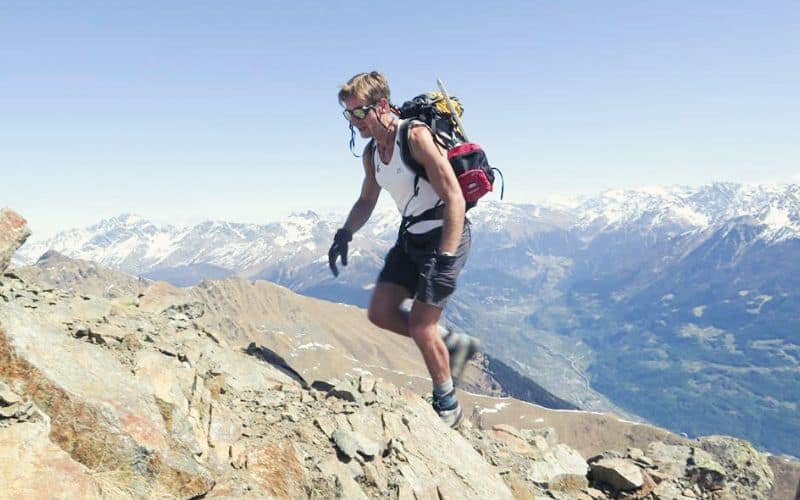
Of course, we all have days where we don’t feel like we’re in top form. No amount of pre-trip training and physical preparation will prevent you from getting tired as you hike. But the more you can train your body to move at a moderate intensity for long periods of time, the more comfortable you’ll feel on long hikes.
Over time, as you get into better shape and improve your overall fitness level, you’ll also probably find that you can hike faster than you did before.
This isn’t to say that a fitness regimen will turn you into ultrarunner Kilian Jornet overnight or that you’ll eventually break a land speed record (we can dream, though, right?). But you’d be surprised at how much cardiovascular and strength training can improve your speed on the trail.
Reduce the Risk of Injuries
When people decide to start a fitness regimen for their outdoor pursuits, they often do so in the hopes that it will make them faster and stronger on their next backpacking trip. While these are likely outcomes from sticking to a regular training schedule, these goals overlook another key benefit of regular exercise: injury prevention.
Yep, that’s right, training for hiking can help you avoid injury on the trail.
Says who, you might ask? Science! A 2021 study from Thomas Jefferson University that looked at injury patterns among Appalachian Trail (AT) thru-hikers found that people who didn’t train for their trek were up to 35% more likely to report injuries than their peers who worked out regularly.
Those same researchers found that it didn’t matter too much injury prevention-wise what kind of exercises you did for your fitness regime so long as you did something. Everything from yoga to strength training and endurance training can help prevent injuries as you trek.
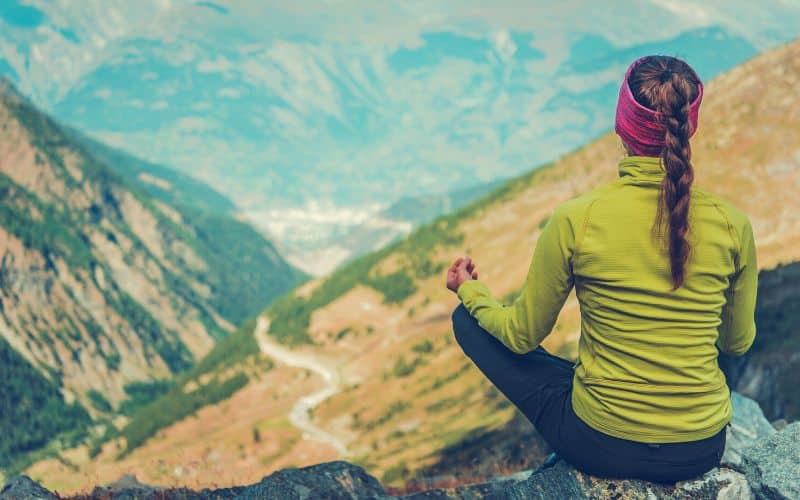
It’s Good for Your Health
Finally, exercise of any kind is good for your health (so long as you don’t overdo it) and a workout plan for hiking is no exception.
While the goal of starting a fitness regime is to get yourself in good shape to hike long distances or to prevent injuries, these programs are exercises in their own right. Any activity you do as part of one of these training plans will contribute to your long-term health, be that basic exercises with a resistance band or a weekly pilates session.
How to Train for Hiking: 9 Steps
At this point, you know why starting a fitness routine for mountain hiking is important. But the question remains: What specific training should you be doing?
Up next, we’ll discuss 9 fantastic steps you can take to build your own workout plan for trekking.
1. Identify Your Objectives & Set Targets
The very first step in creating a fitness program for trekking is to identify your objectives and set goals.
Regardless of what your starting position is strength and endurance-wise, you need to have a good idea of what you want to get out of your workout routine from the get-go.
Perhaps your goal is to be able to take on more challenging hikes. Or maybe you’re looking to be in incredible form for an upcoming expedition to the alpine. Either way, any goal that’s meaningful to you is worth pursuing. But the only way to reach that goal is to know what you want to achieve in the first place.

Do keep in mind that you want to set SMART goals when identifying your fitness objectives.
What is a SMART goal? In this case, SMART is an adjective that stands for:
- Specific – Specificity in goal setting has to do with knowing specifically what you want to accomplish and what steps you need to take to be able to be successful. Saying that you want to “be stronger” on the trail is awesome, but it’s not very specific.
How do you want to get stronger? Are you more concerned with muscular or cardiovascular strength? These are the sorts of questions you need to ask yourself as you set your goals.
- Measurable – A measurable goal is more powerful than a vague objective. If you have a goal of being able to “hike faster,” you’re going to have a hard time measuring your training progress. But setting an aspirational pace of 4 mph on the trail is a measurable goal that you can actually work toward.
- Achievable – We all have big dreams. However, no one goes from zero to hero overnight—there are thousands of little steps that we all have to take to get from our starting point to any goal worth pursuing.
This isn’t to say that you can’t achieve big goals like a new fastest-known time on Denali. But rather that you need to set goals that are achievable in the short term. Otherwise, you might end up disheartened by your “lack” of progress and you might fall behind on your fitness altogether.
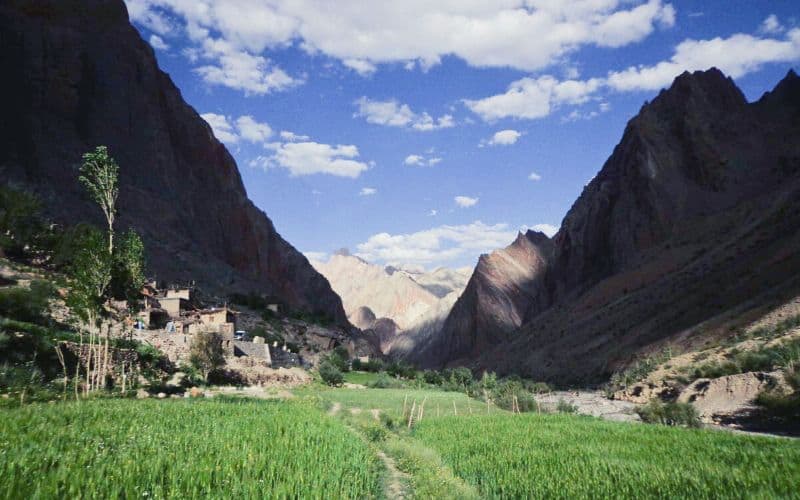
- Relevant – The idea of setting a goal that’s relevant to your hiking style isn’t too groundbreaking. However, it’s important to remember that the goals you set should be relevant to the types of activities you like to do in the mountains.
If you’re interested in day hikes, then a goal of getting the fastest known time on the Pacific Crest Trail might not be that useful. Always place your goals in the context of the bigger picture.
- Timebound – Finally, goals should always have a reasonable time horizon or deadline. While no one likes homework or deadlines, having a set date when you want to have achieved your goals will help them feel more attainable in the long run.
For example, your deadline for your goal might be a big mountain hike that you planned or one of your upcoming backpacking trips. The important thing here isn’t what your deadline is but that you have one in the first place.
2. Establish a Routine (and Make It Non-Negotiable)
Once you have a set of objectives and targets for your hiking training plan, it’s time to establish a routine.
If you’re new to working out and you’ve never used an exercise plan before, it might be worth consulting a fitness professional to help you get started. But if you have a background in training and you understand the fundamentals of creating a workout regime, you can likely create one on your own.
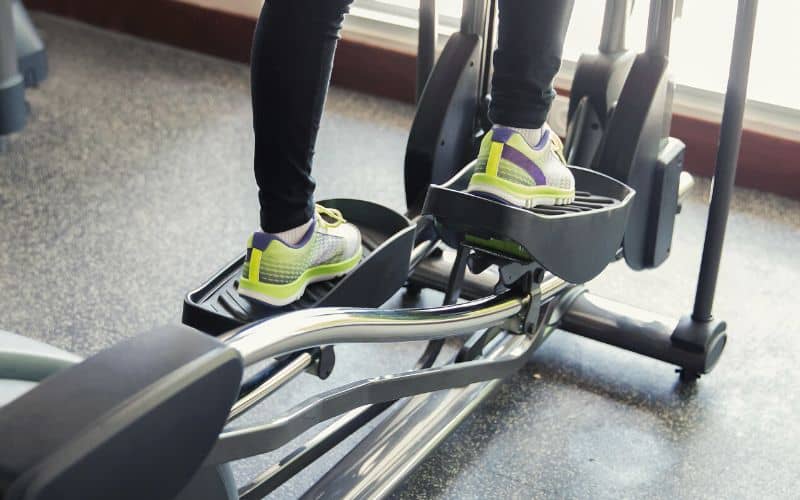
The first step in creating a routine is figuring out how much you can realistically train each week. For some folks, that might be five times a week and for others, it might be only two or three days a week.
However, the key to establishing a routine is that you stick to it. If you say that you’re going to train four times a week to get ready for a big hike, you need to make that happen. It can help to have a workout buddy who can hold you accountable so that you stick to your schedule.
3. Hike!
One of the best ways to train is to go, well, hiking!
There are few better methods for getting your body adjusted to the rigors of the trail than to spend time in the mountains. If you live somewhere that isn’t particularly mountainous, you can still go on training hikes, even if it’s in a relatively flat local park with some uneven terrain or rocky trails. You’ll just need to get creative with how you approach your outings.
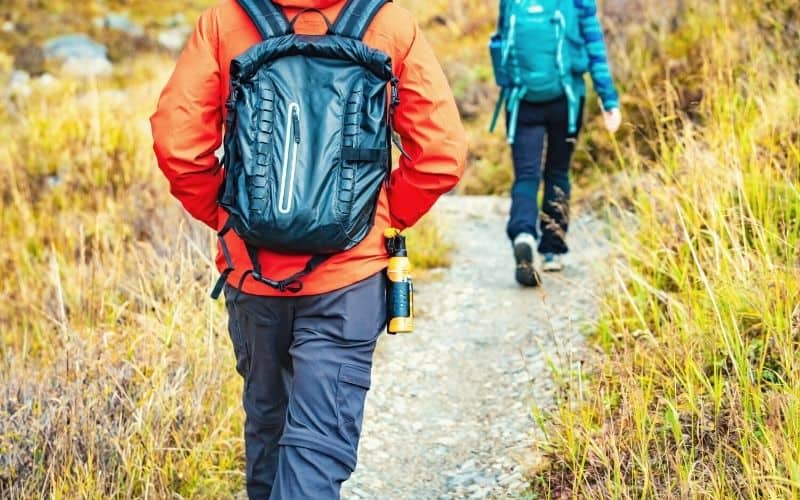
But trekking alone isn’t really “training for hiking.” If you’re serious about improving your stamina and muscle strength, you need to seek out ways to increase the intensity of your outings.
One way to do this is to vary the length, steepness, and elevation gain of your hikes. A long hike on moderate terrain can help build your cardiovascular base for extended adventures. Meanwhile, a short trek on steep terrain can greatly improve your muscle strength.
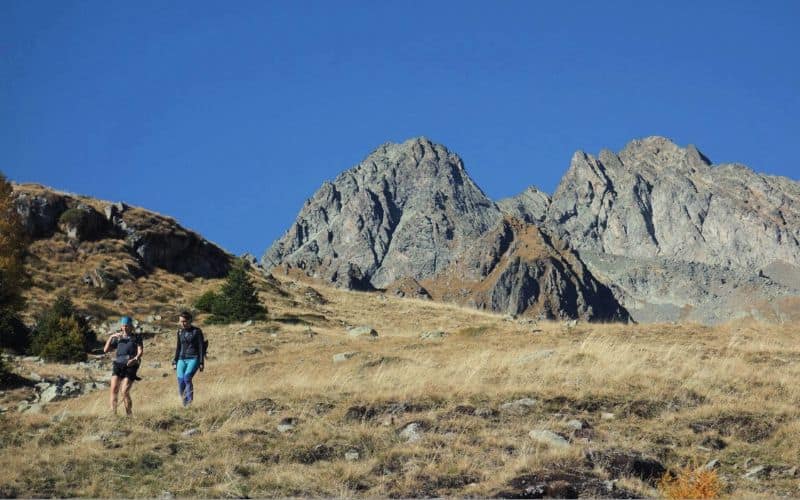
You can also make things harder for yourself by carrying extra pack weight on training hikes. A potential way to do this is to fill your pack with water bottles that you’ll carry on the uphill section of the trail. You can then dump out the water at the summit to save your knees while you trek downhill.
4. Strength Training
In addition to training hikes, any quality hiking fitness program needs to incorporate some strength training.
The best training methods for muscular strength normally involve exercises like squats, mountain climbers, step-ups, and deadlifts. You’ll primarily want to target your lower body, such as your quad muscles, with these exercises.

But don’t forget to work out your core muscles and upper body, too. It can help to dedicate one or two days a week to upper body exercises that target your back, chest, and shoulders. All of these muscle groups are important for hiking as you can use your arms to pull yourself up rocks or to steady yourself on rough terrain. Plus, stronger muscles are less susceptible to injury.
For the most part, these exercises require access to a gym as you often need weights to see real gains in your muscular fitness. There are ways to improve your muscular strength at home without weights (we’ll talk about those in a bit) but a gym membership is worth investing in.
5. Cardio Training
A sizable portion of hiking fitness boils down to your aerobic capacity. In order to boost your aerobic fitness levels, you need to do some cardio training.
There are many ways to train for cardio, including trail running, cycling, swimming, and cross-country skiing. Everyone’s preferences for cardiovascular exercise differ, so it’s up to you to find activities that you enjoy.
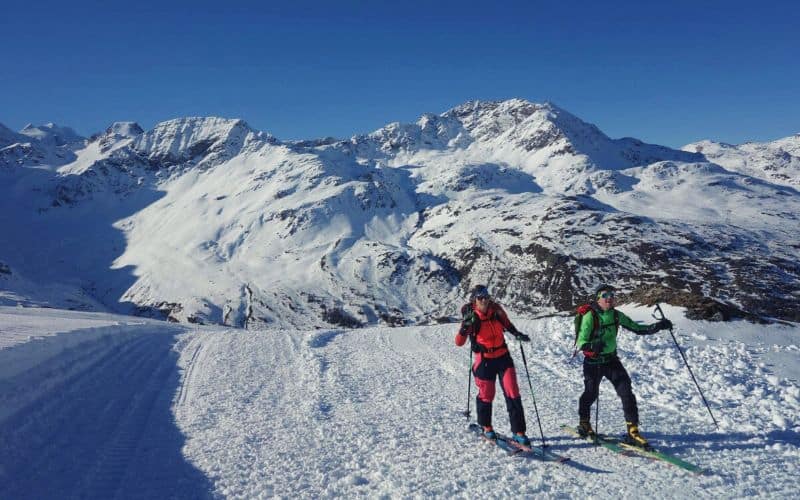
Just remember to gradually increase the intensity and duration of your exercises. Rapid increases in how much you run or hike, for example, can lead to shin splints, hiker’s knee, or other injuries.
Try not to increase your training time or volume load by more than 10% each week. So if you ran 10 miles total in your first week of training, you wouldn’t want to run more than 11 miles in week two. This may seem like a very slow way to increase your training intensity. But it’s better to take things slowly than to get injured and have to stop training.
6. At-Home Workout Exercises
We already discussed a number of exercises you can do at the gym to improve your leg and core muscles. But if you don’t have a gym membership, you might want to work out at home.
There are countless exercises that you can do at home without any special equipment. For example, you can do lunges, calf raises, planks, crunches, step-ups, push-ups, and dips all without buying any gear.
If you want to diversify your exercises a little bit, you can invest in a few resistance bands or sandbags. Having even a few extra workout tools at your disposal can give you lots of variety in your fitness routine.
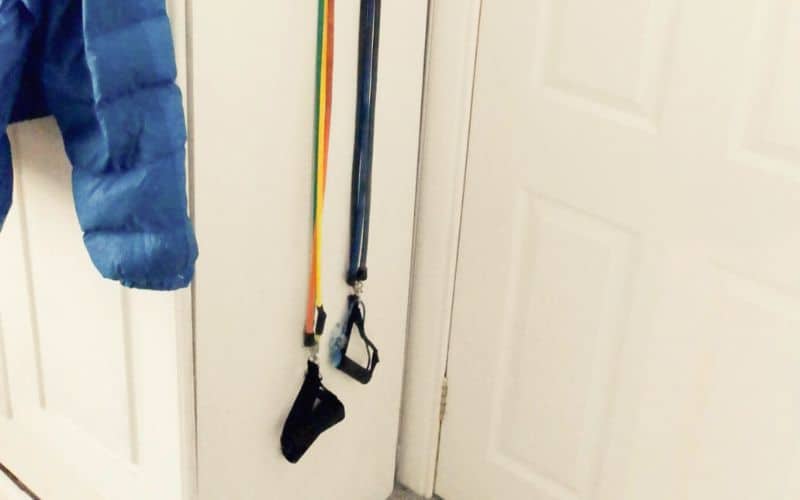
Some of our favorite at-home hiking exercises can be done in just 15 minutes per day. For example, to give your butt, quads, hamstrings, and core a quick but effective workout, you can do glute kickbacks. All you need to do is loop a resistance band around the arches of your feet, assume the tabletop position, then kick your left foot and then your right foot behind you in turns. Simple!
Not motivated to exercise at home? Find a buddy to work out with or search for some exercise videos on Youtube. Anything you can do to stay motivated with your at-home routine can do wonders for you in the long term.
7. Altitude Training
If you’re anything like us, you probably find that hiking at high elevations can be challenging. But altitude sickness is a real thing and avoiding it is a must if you want to have success in taking on big peaks.
That said, the jury’s out on whether or not a higher level of physical fitness can actually prevent altitude sickness. The only thing that truly helps prevent altitude sickness is gradual acclimatization.
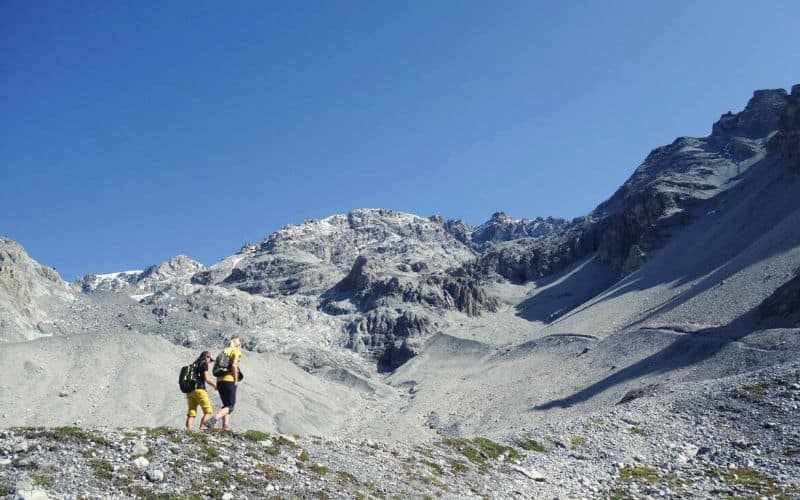
The issue is that most of us don’t live at elevations of 13,000 or 15,000 feet, so acclimatization is a challenge for us folks at sea level.
Enter: the altitude training center.
Elite mountaineers have used altitude training equipment like hyperbaric chambers for years to improve their ability to acclimate in the mountains. Nowadays, you don’t actually have to own one of these very expensive chambers. That’s because there are a number of altitude training centers that can help you access the same equipment.
Be warned, though—memberships can be expensive at these centers. So, they’re only practical if you have a big mountain trip in the future.
8. Mental Training
Mental training doesn’t get as much attention as the physical exertion side of things when it comes to a hiking fitness routine. However, your mental well-being is critical to your success in the mountains.
For some folks, improving your mental fortitude might come down to finding the internal motivation you need to make it up steep trails. In other situations, increasing your mental fitness might require working with a therapist who can help you overcome some of the fear and self-doubt that you have in the mountains.
Either way, don’t forget to allocate some time for your mental well-being during your fitness program. A strong body starts with a strong mind, so you need to get yourself in a good place mentally before you can succeed physically.
9. Rest!
Last but not least, don’t forget to rest!
So many of us get so wrapped up in our fitness regimens that we forget to rest. But if you want to avoid injuries and stay in good shape for your upcoming backpacking trips, you need to remember to put those hiking boots aside and rest from time to time.
We understand how difficult it can be to take a rest day, especially when you have a big adventure that’s rapidly approaching.
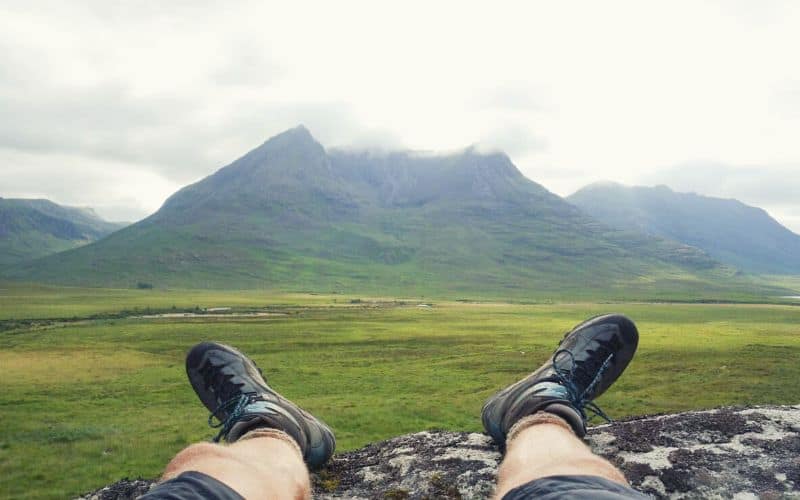
However, taking a day off from exercise gives your muscles a chance to relax and reset so that they can come back stronger than ever before. If you never give your body a moment to rest, it will always be in a state of repair, which is physically draining. Even the best athletes in the world take rest days regularly. If it works for them, why can’t it work for you?
As a general rule, you want to take at least one rest day a week, if not two. If the idea of taking two rest days from exercise isn’t going to fly, consider having one rest day and one active recovery day, instead.
For an active recovery day, you can do some sort of low-impact exercises, such as a casual walk or a low-intensity swim. A relaxing bike ride around your neighborhood is also a great recovery day activity.
While you don’t want your fitness routine to turn into one extended rest day, you need to schedule those days off into your workout program. This is particularly important as you get closer to your next big trip as you need to give your body time to recuperate before you head into the mountains.
Get in Top Hiking Form With a Training Program
In this article, we discussed the ins and outs of getting in shape for hiking. At this point, you understand the benefits of a fitness routine for mountain adventures and you have 9 actionable steps you can take to start training.
So, what did you think of this guide? Did it help you get a better idea of how you’re going to get in shape for your next hiking excursion? Do you have any other top fitness tips to share? Let us know in the comments below!
